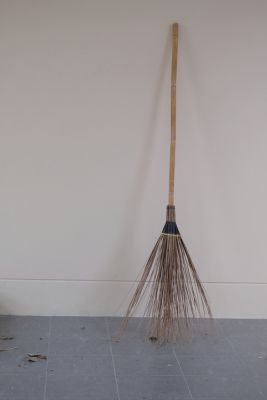 In nearly every culture, weddings signify entry into a new stage of one’s life. Since humans have been choosing symbols and infusing them with significance since the beginning of time, it’s no surprise that many wedding traditions point to larger allegories beyond the acts involved. One of these, known as “jumping the broom,” has a complex, fascinating history that is still debated to this very day.
In nearly every culture, weddings signify entry into a new stage of one’s life. Since humans have been choosing symbols and infusing them with significance since the beginning of time, it’s no surprise that many wedding traditions point to larger allegories beyond the acts involved. One of these, known as “jumping the broom,” has a complex, fascinating history that is still debated to this very day.
Where Did the Tradition Originate?
Writing for The Insider, Jacob Shamsian cites sources such as the American Folklore Society and folklore scholar C.W. Sullivan III, who insisted that broom jumping originated in Wales. Both refer to historical records documenting “broomstick weddings” among Romani people in the region. While these were considered legitimate marriages by the Romani, some local authorities did not regard them as valid unions. Rural residents may have later adopted the custom, and some Neopagans in the United Kingdom and Ireland include it in their weddings today.
At the same time, other scholars maintain that jumping the broom originated in West Africa. A 2016 Atlanta Black Star piece discusses speculation that brooms were used in weddings among the Ashanti, a culture that thrived in what is now modern-day Ghana. According to this theory, elaborately crafted brooms were waved over the couple’s heads to signify the sweeping away of the past and evil influences. The newlyweds would then jump over the brooms together at the end of the ceremony.
Broom Jumping and Slave Marriages in the 19th Century
African-American history scholar Tyler D. Parry insists that no evidence exists to document the practice in Africa prior to the slave trade. Nevertheless, he does explain that in states and territories where slavery was permitted, marriages between slaves were not legally valid. Perry discovered that many still married under a wide variety of circumstances when he studied transcripts of ex-slaves’ oral histories collected by the Works Progress Administration during the 1930s. These weddings included:
- Elaborate, expensive affairs
- Simple ceremonies with a preacher and a few witnesses
- Slaveowner “officiated” weddings
- Ceremonies with only slaves present
The pricier, more lavish events were financed by slaveowners, usually to maintain a humanitarian façade. Interestingly, the WPA-collected testimonies also included several mentions of jumping the broom by former slaves from the American South. Parry points to white people in rural, impoverished communities during the 19th century who also wed in the same fashion, typically because no local clergy was available to officiate their ceremonies.
Did “Roots” Make the Practice Popular?
Perry suggests that broom jumping fell out of practice during the Reconstruction Era. However, it may have been revived by its depiction in the 1976 television miniseries “Roots,” based on the book of the same name by Alex Haley. Although a 2017 article in The Guardian reveals that questions of its historical accuracy remain, the book and the show resonated in the 1970s with an African-American audience robbed of African cultural ties. One pivotal scene shows the protagonist, Kunta Kinte, jumping the broom with his wife, Bell, as they wed.
Seeing it as a legacy leftover from ancestors who survived enslavement and racism, some black individuals started incorporating it into their weddings in the late 1970s. Even today, it can still carry a deep cultural meaning, as evidenced by a 2017 Ebony op-ed piece in which Shantell E. Jamison criticized white couples who adopt the custom for their own ceremonies.
A History on Multiple Continents
While the story behind broom jumping is still a bit unclear, one key takeaway is that the custom was observed in some marginalized communities who lacked access to the legal means to solemnize marriages or existed outside of mainstream societies. Regardless of its initial origins, some today have reclaimed it to honor ancestors who resisted or survived through oppression. It continues on in modern times, infused with new meaning and purpose.
Add Your Comment